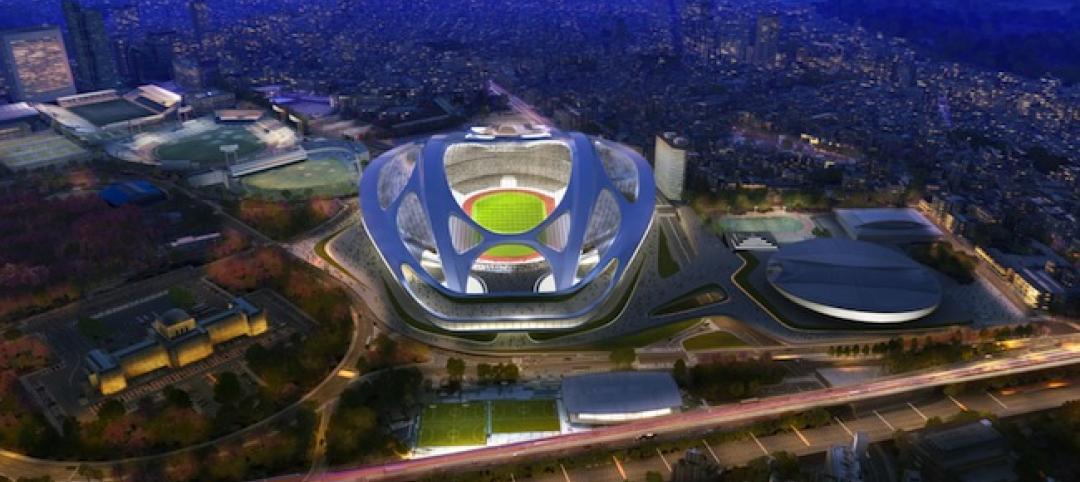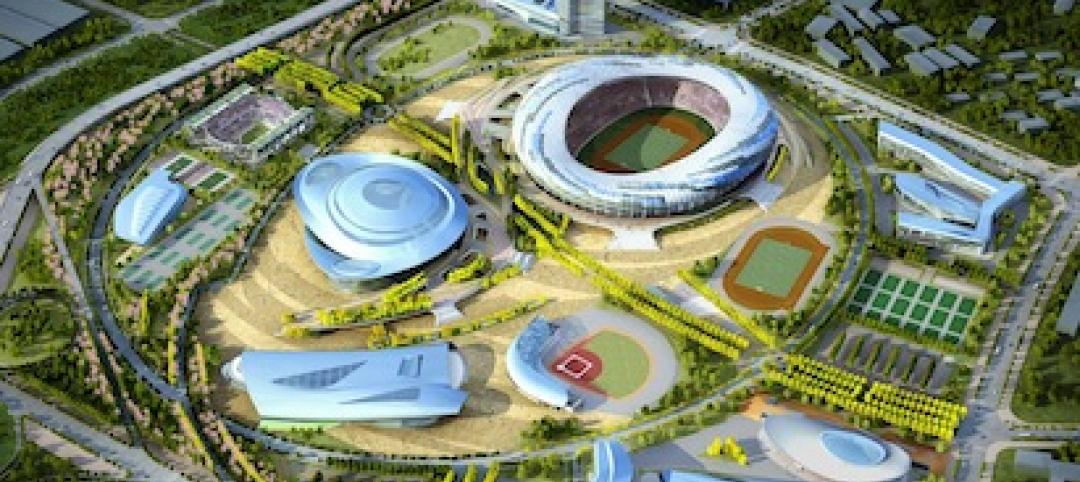Last September, Money magazine was the latest publication to rank McKinney, Texas, as the best place to live in the U.S., based on such factors as economic growth and the quality of its schools.
The city, located about 33 miles north of Dallas, is trying to capitalize its newfound status to attract more residents and businesses. (Its population is currently around 155,000.)
To that end, next Monday McKinney is scheduled to begin construction on a $34.5 million 80,000-sf aquatic and fitness center that local officials hope will make the city even more marketable to newcomers. The center will be built at the Gabe Nesbitt Community Park.
Brinkley Sargent Wiginton Architects is the architect of record on this project. Moody Nolan is the recreational designer. Counsilman-Hunsaker is the aquatics consultant. And Manhattan Construction Group is the Construction Manager at Risk. The city started accepting subcontractor bids in May, and local officials expect the center to be completed by December 2016.
The three-story center will have a gym, fitness rooms, sports courts, water slides, and 10,000 sf of pools, including a 25-meter indoor competitive pool. The center will also offer classes and childcare.
The Courier-Gazette, a local newspaper, reports that $33 million of the project’s cost are being funded by the McKinney Community Development Corporation with a combination of sales tax revenue and bond financing.
This project, the biggest in McKinney’s history, has been kicking around since 1999, when Ryan Mullins became the city’s assistant parks and recreation director. In 2006, voters approved bond financing for the center. (The Dallas Morning News reports that the final plans for the center are scaled down from an initial project that would have cost $44 million. It also reports that the center has taken so long to get started because the McKinney Independent School district, which was to provide $15 million, backed out of the deal.)
The groundbreaking for the new center will be a welcome event for McKinney, whose image took a hit last month when, during a rowdy party the Craig Ranch Community pool, a police officer pushed a 15-year-old girl to the ground and drew his gun on other young people.
Related Stories
| Jun 12, 2014
Austrian university develops 'inflatable' concrete dome method
Constructing a concrete dome is a costly process, but this may change soon. A team from the Vienna University of Technology has developed a method that allows concrete domes to form with the use of air and steel cables instead of expensive, timber supporting structures.
| Jun 11, 2014
Esri’s interactive guide to 2014 World Cup Stadiums
California-based Esri, a supplier of GIS software, created a nifty interactive map that gives viewers a satellite perspective of Brazil’s many new stadiums.
| Jun 4, 2014
Construction team named for Atlanta Braves ballpark
A joint venture between Barton Malow, Brasfield & Gorrie, Mortenson Construction, and New South Construction will build the Atlanta Braves ballpark, which is scheduled to open in early 2017. Check out the latest renderings of the plan.
| Jun 2, 2014
Parking structures group launches LEED-type program for parking garages
The Green Parking Council, an affiliate of the International Parking Institute, has launched the Green Garage Certification program, the parking industry equivalent of LEED certification.
| May 29, 2014
7 cost-effective ways to make U.S. infrastructure more resilient
Moving critical elements to higher ground and designing for longer lifespans are just some of the ways cities and governments can make infrastructure more resilient to natural disasters and climate change, writes Richard Cavallaro, President of Skanska USA Civil.
| May 22, 2014
Just two years after opening, $60 million high school stadium will close for repairs
The 18,000-seat Eagle Stadium in Allen, Texas, opened in 2012 to much fanfare. But cracks recently began to appear throughout the structure, causing to the school district to close the facility.
| May 20, 2014
Kinetic Architecture: New book explores innovations in active façades
The book, co-authored by Arup's Russell Fortmeyer, illustrates the various ways architects, consultants, and engineers approach energy and comfort by manipulating air, water, and light through the layers of passive and active building envelope systems.
| May 19, 2014
What can architects learn from nature’s 3.8 billion years of experience?
In a new report, HOK and Biomimicry 3.8 partnered to study how lessons from the temperate broadleaf forest biome, which houses many of the world’s largest population centers, can inform the design of the built environment.
| May 16, 2014
Toyo Ito leads petition to scrap Zaha Hadid's 2020 Olympic Stadium project
Ito and other Japanese architects cite excessive costs, massive size, and the project's potentially negative impact on surrounding public spaces as reasons for nixing Hadid's plan.
| May 13, 2014
First look: Nadel's $1.5 billion Dalian, China, Sports Center
In addition to five major sports venues, the Dalian Sports Center includes a 30-story, 440-room, 5-star Kempinski full-service hotel and conference center and a 40,500-square-meter athletes’ training facility and office building.

















